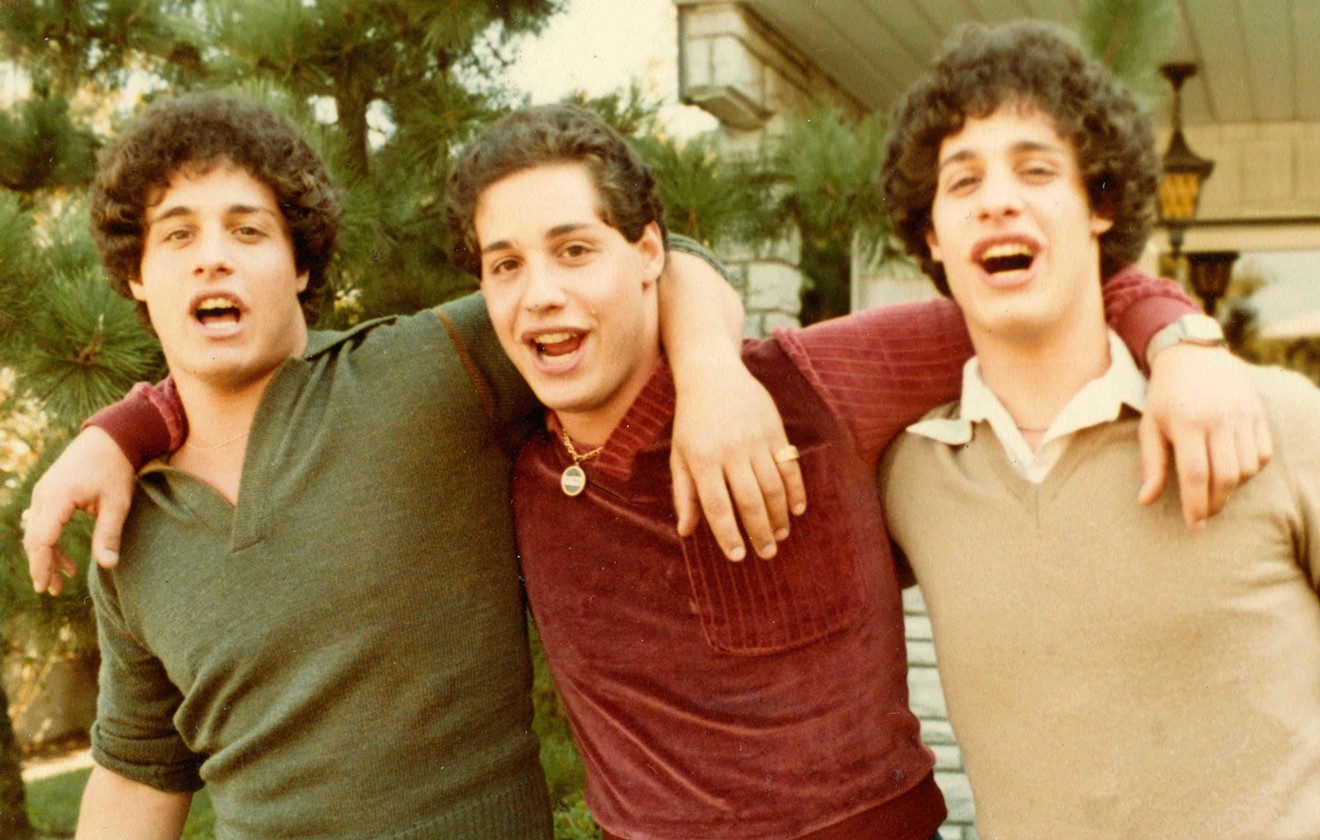The best way to experience Tim Wardle’s documentary Three Identical Strangers is to do so without knowing a single thing about it. So before proceeding any further, let’s just get this out of the way: It’s an excellent movie, and you should see it.
If that’s all you need, you can stop reading now.
For those still here, I’ll try to steer clear of the film’s most shocking revelations. But there’s no getting around the central premise, which itself is fun to discover. The movie opens in 1980, with 19-year-old Robert Shafran of Westchester County arriving at Sullivan County Community College in the Catskills. It’s his first day at that school, and yet everybody on campus appears to know him and call him “Eddy.” (Wardle cannily mixes staged recreations with talking head interviews and archival footage, so we experience much of the narrative in the present tense.)
A fellow student, starting to realize what’s going on, grabs Robert and drives him to the Long Island home of 19-year-old Eddy Galland — and Robert comes face to face with himself. Or rather, his exact doppelganger. Eddy and Robert, it turns out, are identical twins, separated at birth, now brought together by an amazing coincidence. So, they get newspaper stories written about their startling reunion ... whereupon a third person shows up: David Kellman of New York City. Now there are three identical young men — triplets, each of whom was apparently sent to a different home by the same adoption agency, without any information given to their new families about the existence of the others.
At this point, these men stop being human interest tabloid fodder and turn into a national pop culture phenomenon, complete with movie cameos (they show up in the Madonna vehicle Desperately Seeking Susan) and a legendary Donahue appearance, where they charm the audience with their similar actions and tastes, along with their vibrant smiles and ebullient personalities. The triplets play up their similarities by dressing the same way, barking the same things in unison, crossing their legs at the same moment — they enjoy each other and the spectacle and the attention. But there’s no phoniness about what we’re seeing. These men may have been raised in completely different families, but they reflect each other as if they had been living together all this time, sharing and loving and desiring the same things, learning the same behaviors. Capitalizing on their fame, they open a Soho restaurant called Triplets.
All that gets covered in something like the first 30 minutes of the movie. Then, relations start to strain between the brothers. Going into business together, they discover that they’re actually not all that similar. Nature may have had its say, but so, too, does nurture, plus circumstance, luck, class and the million other factors that go into the creation of a human identity.
From there, the story goes absolutely bonkers, taking twists that send things spinning not just in another direction, but practically into another dimension — one far more paranoid and tragic. I won’t say too much about it here (I’ve probably already said too much), but suffice it to say that investigative journalist Lawrence Wright becomes a key talking head — he of the Al-Qaeda chronicle The Looming Tower and the Scientology expose Going Clear.
It’s a startling story, and Wardle tells it well. There’s a jaunty playfulness to the early scenes, which gradually morph into something darker, more introspective and open-ended. The film even confronts its own audience in some ways, as it goes from a tale of three people learning more about their identities, to one about the very nature of human identity itself … and then to a tale about what it means to even inquire about the nature of human identity. And all along, the director never lets the energy flag, even after he can no longer rely on the wonders of the triplets’ discoveries — when the story, in a sense, becomes about a lot more than them.
It takes skill and artistry to shape a film with this many layers so that it's clear and emotionally resonant. The temptation might be to reflect, in form, the craziness of the tale. Another approach might be to just get out of the way entirely and let the story tell itself. Wardle strikes a vital middle path: one that keeps us intrigued and uncertain, that allows us to be entertained by the dizzying wildness of real life, without ever losing sight of the humans at its heart.
[
{
"name": "Air - MediumRectangle - Inline Content - Mobile Display Size",
"component": "18478561",
"insertPoint": "2",
"requiredCountToDisplay": "2"
},{
"name": "Editor Picks",
"component": "16759093",
"insertPoint": "4",
"requiredCountToDisplay": "1"
},{
"name": "Inline Links",
"component": "17980324",
"insertPoint": "8th",
"startingPoint": 8,
"requiredCountToDisplay": "7",
"maxInsertions": 25
},{
"name": "Air - MediumRectangle - Combo - Inline Content",
"component": "16759092",
"insertPoint": "8th",
"startingPoint": 8,
"requiredCountToDisplay": "7",
"maxInsertions": 25
},{
"name": "Inline Links",
"component": "17980324",
"insertPoint": "8th",
"startingPoint": 12,
"requiredCountToDisplay": "11",
"maxInsertions": 24
},{
"name": "Air - Leaderboard Tower - Combo - Inline Content",
"component": "16759094",
"insertPoint": "8th",
"startingPoint": 12,
"requiredCountToDisplay": "11",
"maxInsertions": 24
}
]











